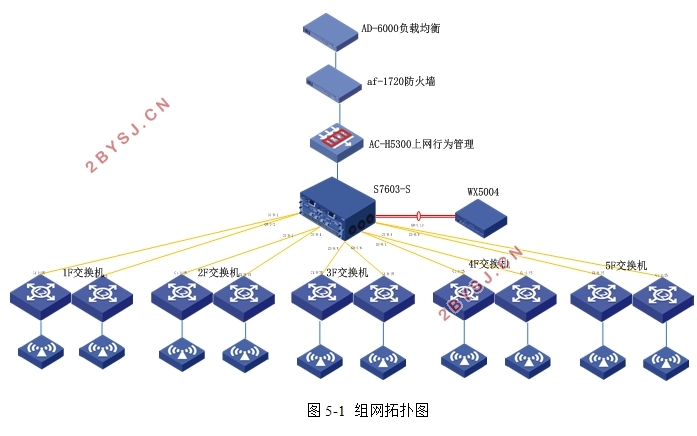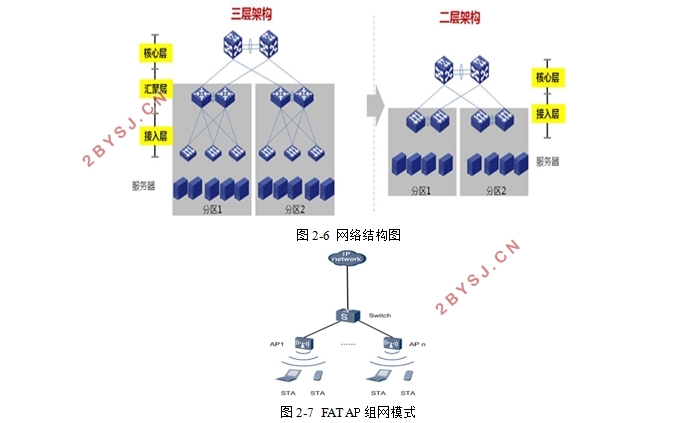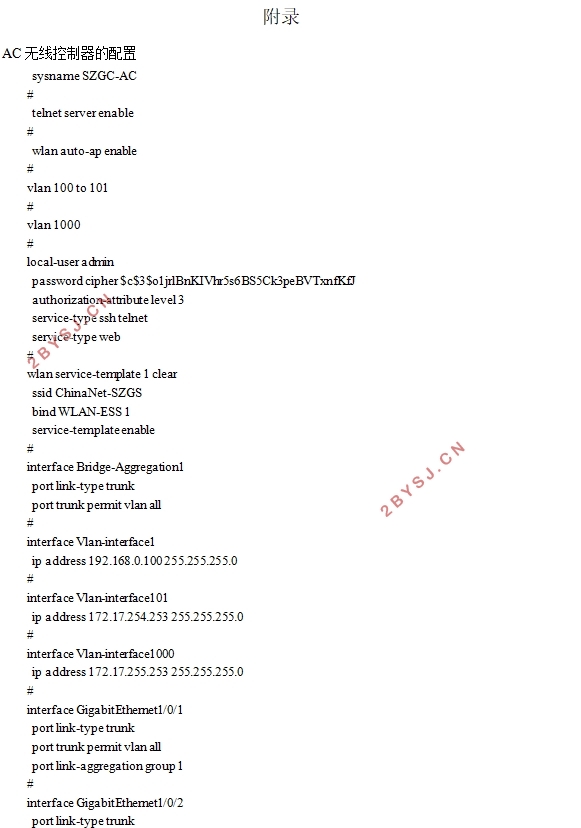中小企业机构无线网络覆盖
无需注册登录,支付后按照提示操作即可获取该资料.
中小企业机构无线网络覆盖(任务书,论文19000字)
摘 要
无线局域网(Wireless Local Area Network, WLAN)是一种利用无线电波在空间介质的传播来实现信息的传输的技术。相比较于有线接入方式,WLAN有着先天的优势,例如传播介质的改变,网络变得更加自由与便携,用户可以随时随地自由的接入网络,同时省去了布线等繁杂的施工过程,使得投入降低管理更为简便。目前越来越多的行业在WLAN技术的帮助下有效的提高了工作效率,因此对WLAN技术的组网研究具有很重要的意义。本次设计中我准备以理论结合实际的方式,讨论WLAN的各方面技术。在正文中我会先对WLAN各方面技术进行整理,以实际的工作流程为基础按步骤介绍WLAN的种种技术细节,在第二部分中我会展示一个实际的项目工程,使得观看者在对WLAN理论知识有了一定了解后结合实际情况来拥有更深的理解。
关键字:WLAN 覆盖规划 设计
Study on the Wireless Network of small and medium Organization or Enterprises
Abstract
WLAN (Wireless Local Area Network) uses electromagnetic wave of information transmission in space. Compared with the cable access, it has many obvious advantages, for example from the bondage of the port and cable, the network become more free and portable, the user can free access to the network anytime and anywhere. At the same time saving wiring multifarious construction makes the construction of the network more economic and more easy to implement. A growing number of industry with the help of the WLAN technology effectively to improve the work efficiency at present, so the research of WLAN technology has very important significance. In this design I am going to combine theory to practice, studying various aspects of WLAN technology. I will introduce the steps of WLAN technology details on the basis of the actual working process in the first part and the second part introduces the actual project engineering making the viewer in the theoretical knowledge of WLAN had certain understanding after combining the actual situation to have deeper understanding.
Key Words: WLAN; Coverage Planing; Design



目 录
摘 要 I
Abstract II
第一章 绪论 1
1.1 WLAN技术背景 1
1.2 WLAN基本元素 1
1.2.1 服务集识别码 1
1.2.2 基础服务集 1
1.2.3 分布式系统 2
1.2.4 扩展服务集 2
1.3 WLAN硬件设备 3
1.3.1 无线接入点 3
1.3.2 无线网桥 5
1.3.3 天线 6
1.4 本章小结 7
第二章 WLAN方案设计 8
2.1 勘测的意义 8
2.2 勘测的工作流程 8
2.3 勘测前的准备工作 9
2.4 无线信号损耗估测 10
2.4.1 空间传播损耗 10
2.4.2 穿透损耗估测 10
2.5 勘测设计原则 11
2.5.1 室内覆盖规划 11
2.5.2 室外覆盖规划 12
2.6 无线硬件 13
2.6.1 AP点位 13
2.6.2 无线设备选型 15
2.7 有线组网 16
2.8 本章小结 18
第三章 WLAN网络安全 19
3.1 加密方式 19
3.1.1 有线等效加密方式 19
3.1.2 WPA加密方式 19
3.1.3 WAPI加密方式 19
3.2 认证方式 20
3.2.1 MAC地址接入认证 20
3.2.2 802.1x认证 20
3.2.3 预共享秘钥接入认证 20
3.2.4 Portal认证 20
3.2.5 短信认证 20
3.2.6 微信认证 21
3.3 本章小结 21
第四章 WLAN网络优化 22
4.1 无线优化方法 22
4.1.1 信号强度 22
4.1.2 信道规划 22
4.1.3 功率规划 23
4.1.4 高级特性优化 24
4.2 本章小结 24
第五章 WLAN工程实例 25
5.1 项目背景 25
5.2 无线网络方案 25
5.3 组网方案 26
5.4 IP地址规划 26
5.5 业务功能 28
5.6 测试验收 28
5.7 本章小结 31
第六章 总结 32
参考文献 33
附录 34
致谢 40
